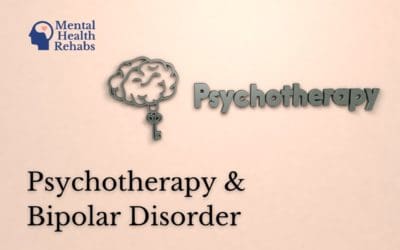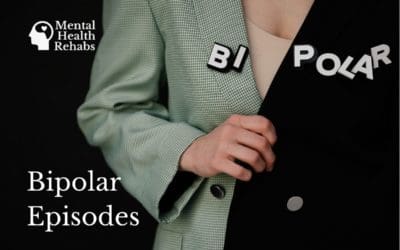Bipolar I Disorder.

What is Bipolar 1 Disorder?
Bipolar 1 Disorder is a subtype of bipolar disorder. It is defined by the presence of at least one manic episode in a person’s life. While individuals with this disorder often experience depressive episodes, a manic episode is essential for the diagnosis.
Symptoms
The first symptoms of bipolar I disorder typically manifest during adolescence or early adulthood, before age 20, and can develop at any point before age 50.
Manic Episodes
Characterized by abnormally elevated energy levels, irritability, rapid speech, impulsivity, and sometimes delusions or hallucinations. Symptoms include intense euphoria, excessive energy, insomnia, and engaging in risky behaviors.
Depressive Episodes
Hypomania
Mixed Episodes
Diagnosis
Bipolar 1 Disorder is diagnosed when a manic episode lasts at least seven days or is so severe that hospitalization is required. Depressive episodes can also occur and typically last for about two weeks.
For Bipolar I Disorder, the DSM-5 sets out specific criteria:
- Manic Episode: The individual must experience at least one manic episode.
- Significant Distress or Impairment: The manic episode must be severe enough to cause marked impairment in social or occupational functioning, necessitate hospitalization to prevent harm to self or others, or have psychotic features.
- Not Attributable to a Substance or Medical Condition: The episode is not better explained by schizoaffective disorder, schizophrenia, schizophreniform disorder, delusional disorder, or other specified or unspecified schizophrenia spectrum and other psychotic disorders. It’s also not attributable to the effects of a substance or another medical condition.
- Depressive Episode: While the presence of a depressive episode is not required for the diagnosis of Bipolar I Disorder, many individuals do experience them.
It’s important to note that the above is a summary, and the DSM-5 provides more detailed criteria and descriptions. If someone believes they or someone they know may have Bipolar I Disorder, it’s crucial to consult a mental health professional for a comprehensive assessment and diagnosis.
Causes and Risk Factors
While the causes of bipolar disorder are still unclear, there are some potential causes and risk factors to consider:
- Family History: While no gene has been identified as the “cause” of Bipolar 1 Disorder, research indicates that individuals with a family history of the disorder are at a higher risk.
- Brain Chemical Imbalance: Brain scans of individuals with Bipolar 1 Disorder often show structural and functional differences compared to those without the disorder. Mood shifts in bipolar disorder are believed to be linked to imbalances in neurotransmitters like norepinephrine and serotonin.
- Life Stressors: Certain life events or circumstances can trigger the onset or recurrence of manic and depressive episodes. This includes traumatic events, significant life changes, or high levels of prolonged stress.
- Substance Abuse: While not a direct cause, the use of drugs or alcohol can exacerbate the symptoms of Bipolar 1 Disorder and might trigger manic or depressive episodes.
- Anxiety Disorders: It’s not uncommon for individuals with Bipolar 1 Disorder to also suffer from anxiety disorders, including generalized anxiety disorder, panic disorder, or social anxiety disorder.
- Physical Health Issues: Individuals with Bipolar 1 Disorder often have co-existing health issues such as cardiovascular disease, thyroid problems, or obesity. These can result from the disorder, medication side effects, or lifestyle factors.
Bipolar 1 Management and Treatment
Medication is the cornerstone of the disorder’s treatment, but psychotherapy can help patients learn about their triggers and stick to their medication regime. Bipolar 1 treatment includes medication, talk therapy, therapeutic procedures, and healthy daily habits.
Medications
Mood Stabilizers
Neuroleptics (Antipsychotics)
Antidepressants
Psychotherapy
Cognitive Behavioral Therapy (CBT)
Family-Focused Therapy
Interpersonal and Social Rhythm Therapy
Other Treatments
Electroconvulsive Therapy (ECT)
Transcranial Magnetic Stimulation (TMS)
Both ECT and TMS are typically considered when other treatments (like medications and psychotherapy) haven’t been effective or can’t be used. They are administered under the guidance of trained professionals and often in specialized settings. It’s essential for patients to discuss potential risks and benefits with their healthcare provider.
Living With Bipolar 1 Disorder
With the proper support and management, individuals can lead fulfilling lives while managing their symptoms. Here are some recommendations for living with bipolar 1 disorder:
- Awareness and Acceptance: Recognizing the symptoms and accepting the diagnosis are the first steps toward effective management.
- Routine Management: Maintaining a routine, especially concerning sleep and meals, can help stabilize mood.
- Avoiding Triggers: Being aware of personal triggers, whether they’re stress, substances, or lack of sleep, and taking steps to avoid or manage them is crucial.
- Support Systems: Building and maintaining a strong support system, whether it’s family, friends, or support groups, can make a significant difference in managing the disorder.
Outlook
The outlook and prognosis for Bipolar 1 Disorder can vary widely based on several factors, including the individual’s adherence to treatment, the presence of co-occurring disorders, and the level of support they receive. Bipolar 1 Disorder is a lifelong condition. While individuals may experience periods of wellness, the risk of recurrence is always present.
With consistent treatment, many individuals with Bipolar 1 Disorder can manage their symptoms effectively. Medication, therapy, and lifestyle changes can significantly reduce the frequency and severity of episodes. Also, individuals with strong support systems, including family, friends, and support groups, tend to have a better prognosis. Support can help with treatment adherence, coping strategies, and overall quality of life.
Keep in mind there’s an increased risk of certain physical health issues in individuals with Bipolar 1 Disorder, including cardiovascular disease, diabetes, and obesity. Regular medical check-ups and a healthy lifestyle can mitigate some of these risks.
While challenges exist, many individuals with Bipolar 1 Disorder lead fulfilling, successful lives. Early diagnosis, comprehensive treatment, and a strong support system are critical to improving the long-term outlook.
Frequently Asked Questions (FAQs)
What is a person with bipolar 1 like?
A person with Bipolar 1 Disorder experiences distinct mood episodes characterized by manic highs and, often, depressive lows. During manic episodes, they may exhibit elevated energy, reduced need for sleep, increased talkativeness, impulsivity, and grandiose thinking. In contrast, depressive episodes can lead to feelings of sadness, fatigue, loss of interest in activities, and potential thoughts of suicide.
Is bipolar type 1 serious?
Yes, Bipolar Type 1 is a serious mental health condition. Individuals with Bipolar 1 Disorder experience intense manic episodes that can lead to risky behaviors, impaired judgment, and even psychotic features like hallucinations. Additionally, depressive episodes, which are also common in Bipolar 1, can be debilitating and carry a risk of suicide.
What is the difference between bipolar 1 and 2?
Related Conditions
- Bipolar Disorder
- Bipolar II
- Cyclothymia
Related Articles
7 Bipolar Triggers & Warning Signs You Should Know
There are a lot of words a person could use to describe bipolar disorder -- and ‘predictable’ isn’t one of them. A disorder characterized by vacillations between episodes of high energy (mania) and depression, it’s impossible to know exactly when these episodes will...
What is the Role of Psychotherapy in the Treatment of Bipolar Disorder?
If you’re familiar with what bipolar disorder is--a mental illness that causes extreme mood swings that cycle between dramatic highs and lows which can result in sudden and extreme changes in behavior, mood, cognitive ability, energy levels, and more--it might be hard...
What Is a Bipolar Episode & How To Predict Them
Bipolar disorder is a mental illness estimated to affect 4.4% of Americans. Unfortunately, this serious mental illness is one shrouded with misconceptions that have resulted in harmful stigmas that have been difficult to shake. One of the best ways to reduce the...
Are You Born with Bipolar Disorder or Does it Develop?
Are you born with bipolar disorder or is it a mental illness that occurs when something happens to you? Science tells us that it’s a little bit of both. Your genes, the cell-building codes inherited from your parents, can lay the neurobiological groundwork that causes...
Don’t Struggle Alone.
Get Help Today.
Reaching out for help for yourself or a loved one can be overwhelming and stressful, but it doesn’t have to be. If you are struggling to find the right help, or even know where to get started, please feel free to call our 24/7 helpline.
Begin your mental health journey right now!




